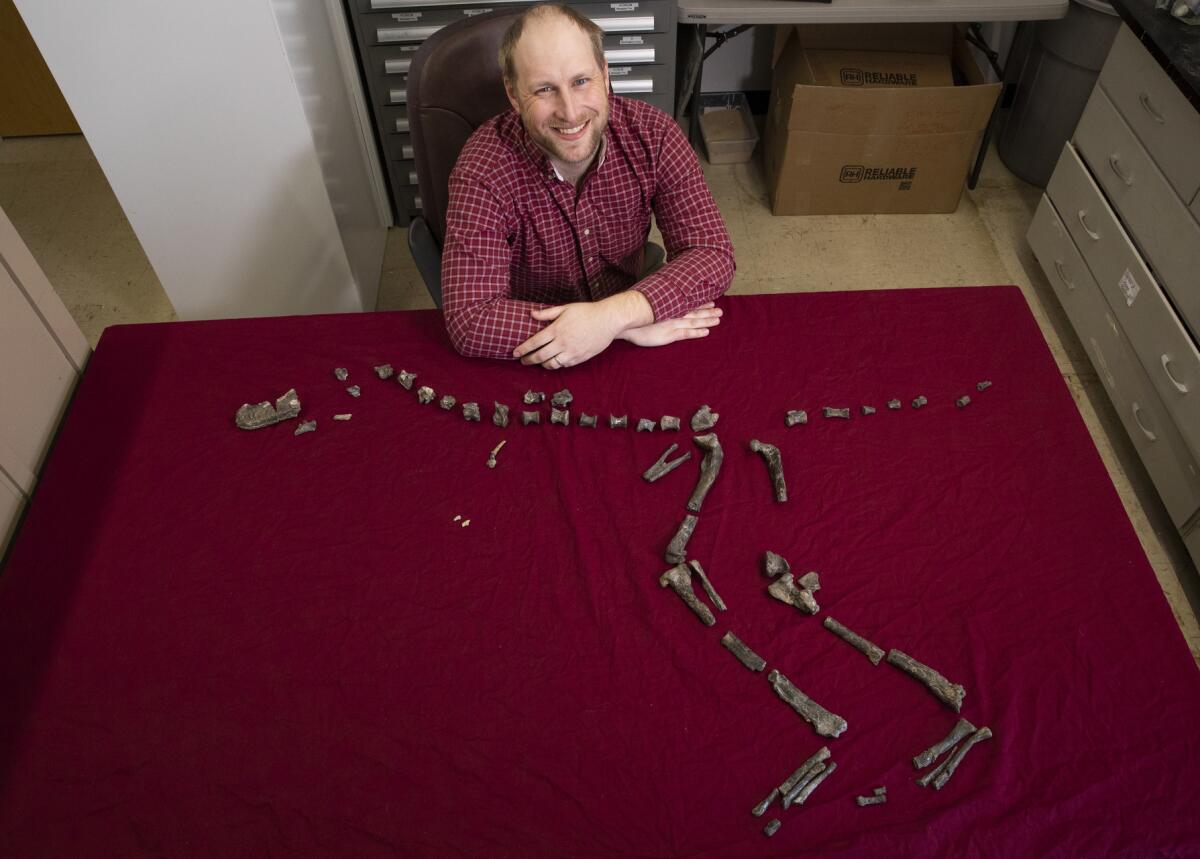Meet the T. rex cousin that you could look down on
History’s most frightening dinosaur, the Tyrannosaurus rex, came from a long line of pipsqueaks.
Scientists have identified a new cousin of the T. rex that reached only the 3-foot height of a toddler. If it stretched its duck-billed head, an adult human maybe “would be looking at it in the eye,” said Sterling Nesbitt, a paleontologist at Virginia Tech, who discovered the diminutive dinosaur.
Nesbitt found a set of its bones in 1998. At the time, he was only 16 and was serving as a volunteer on a dig in New Mexico.
For about two decades, scientists weren’t certain what kind of creature the bones had belonged to — until other small cousins of T. rex were discovered.
“The small group of tyrannosauroid dinosaurs would give rise to some of the biggest predators that we’ve ever seen,” said Nesbitt, lead author of a study published this week in Nature Ecology and Evolution.

The newly discovered dinosaur is called Suskityrannus hazelae, and its name comes from the Zuni word for coyote. It dates back 92 million years, about 20 million years before the T. rex stomped the Earth.
Suskityrannus hazelae was three times longer than it was tall, and it weighed between 45 and 90 pounds — almost nothing compared with the 9-ton king of the dinosaurs.
These long-necked, elephant-sized dinosaurs arose long before Brachiosaurus »
The New Mexico specimen isn’t the first or even the smallest member of the Tyrannosaurus family tree. But Nesbitt said it provides the best example of how this family of modest-sized dinosaurs evolved into the towering creatures seen in movies, television shows and nightmares.
Smithsonian Institution paleobiologist Hans Sues agreed that the dinosaur was an important find.
“Suskityrannus is the first really good record of the early tyrannosaurs in North America,” said Sues, who wasn’t involved in the study.
These carnivores weren’t particularly big compared with other dinosaurs alive at that time, and it’s unclear why they evolved to be so enormous.
Nesbitt said the newly discovered species is probably among the last of the little guys. It was bigger than earlier tyrannosauroids and had big feet needed for speed — something the T. rex lost.






